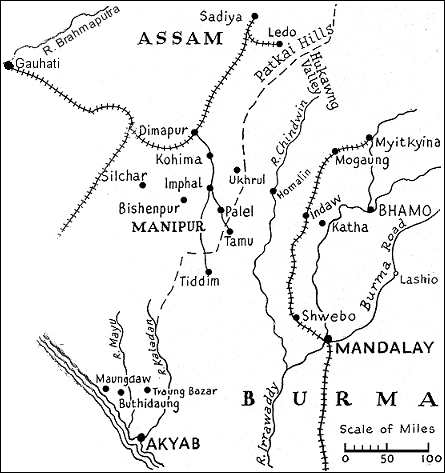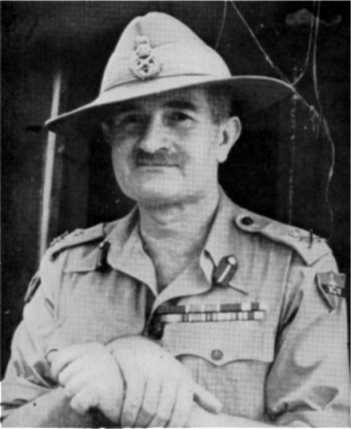The Japanese offensive 'U-Go' in northern Burma begins on the 6th March 1944. The aim was to destroy all British forces around Imphal and Kohima, and then to push on through the passes to Dimapur, cutting off the Chinese and Americans in the north, and then break though into India.
The gateway to India lay through the isolated border town of Imphal in the then district of Manipur. Some 80 miles north of Imphal is the hill town of Kohima, 5000 feet above sea level in the middle of the Naga Hills. From Kohima the narrow winding Manipur Road continued north-west to the railhead at Dimapur, 40 miles from Kohima.
Three divisions of the Japanese 15th Army, commanded by Lieut.-General Renya Mutaguchi were employed in the initial operations. Two of the divisions (15th and 33rd) crossed the Chindwin River and moved on Imphal while the third division (31st) headed for Kohima.
On 1st April 1944 the 7th Battalion Worcestershire Regiment crossed the Brahmaputra river at Gauhati and entered the operational area of Assam. Almost immediately the the Battalion moved on to railhead at Dimapur. On 2nd April a perimeter was formed to cover the approaches to Dimapur from the north.


Lieut.-Gen. Sir W. J. Slim
At Kohima, last-minute reinforcements were rushed in from Dimapur by the commander of the British 33rd Corps, Lieutenant-General Montagu Stopford. two battalions, supported by artillery, were positioned 2 miles (3km) west of Kohima itself on the highest hill in the ridge, later to become known as Garrison Hill.
On 10th April 1944 “A” and “D” Companies of the 7th Battalion Worcestershire Regiment moved up to milestone 32 with the object of reinforcing two companies of the Assam Regiment who were astride the road. The village of Zubza was reached by “D” Company in Motor Transport. Further progress was then made on foot, the immediate objective being a blown bridge, the main responsibility falling to “D” Company. In the darkness they failed to make their objective and by dawn found themselves caught in an ambush, whereupon they concentrated at Zubza and were joined by the rest of the Battalion.
Some fifteen miles to the south-east lay the village of Kohima, out of which ran a track due north to Bokajan. The Japanese used the track for supply to the north, and it was now decided to cut across east on to the track to a feature, Merema, some 4,900 feet high. Thus it was hoped to dominate the Kohima position. In the meanwhile 4 and 6 Brigades were to move down the main road, 5 Brigade delivering its left hook to the main movement and thereby assuming by far the most difficult task in the general plan.
The move from Zubza on 22nd April involved covering only some three miles, but the route led up and down a formidable hillside through thick jungle. There was no track so that mules could not be taken and the Brigade moved on a man-pack basis, with no blankets, cookers or creature comforts in any form. The method of advance, which was to deploy the whole Brigade in single file, would not have won approval at a Staff College exercise. But, in fact, it was unorthodox enough to be highly successful and Merema was taken without opposition on 24th April. It was clear from the manner in which Japanese supply columns continued to dribble innocently up and down the Bokajan track that they had been taken completely by surprise.
A tribute is here due to the Naga stretcher-bearers. Throughout the campaign the evacuation of the wounded up and down the thickly jungle-clad hills presented superhuman difficulties. But in all weather the Naga hillmen rose to the occasion.
THIS PAGE IS STILL UNDER CONSTRUCTION